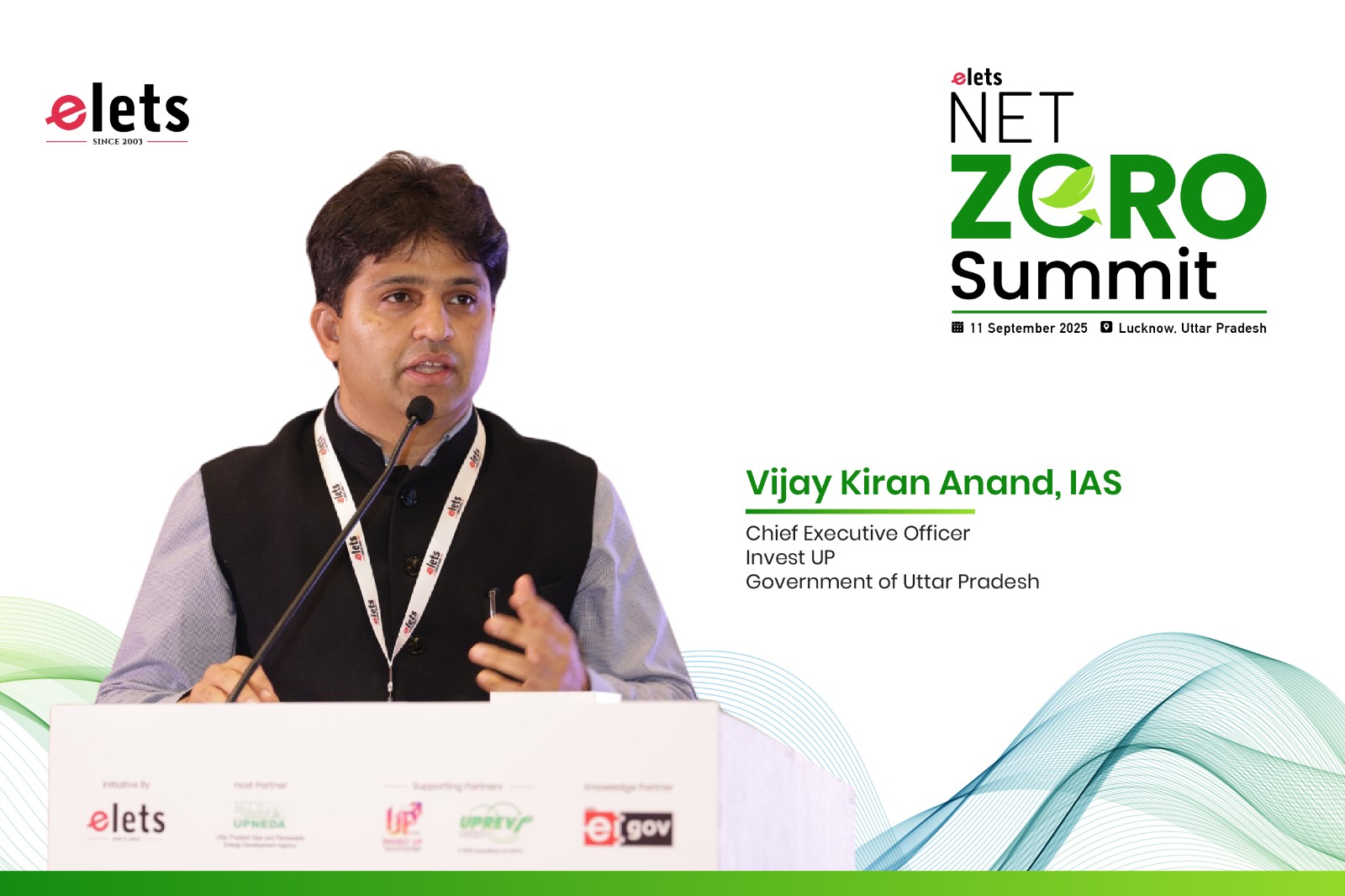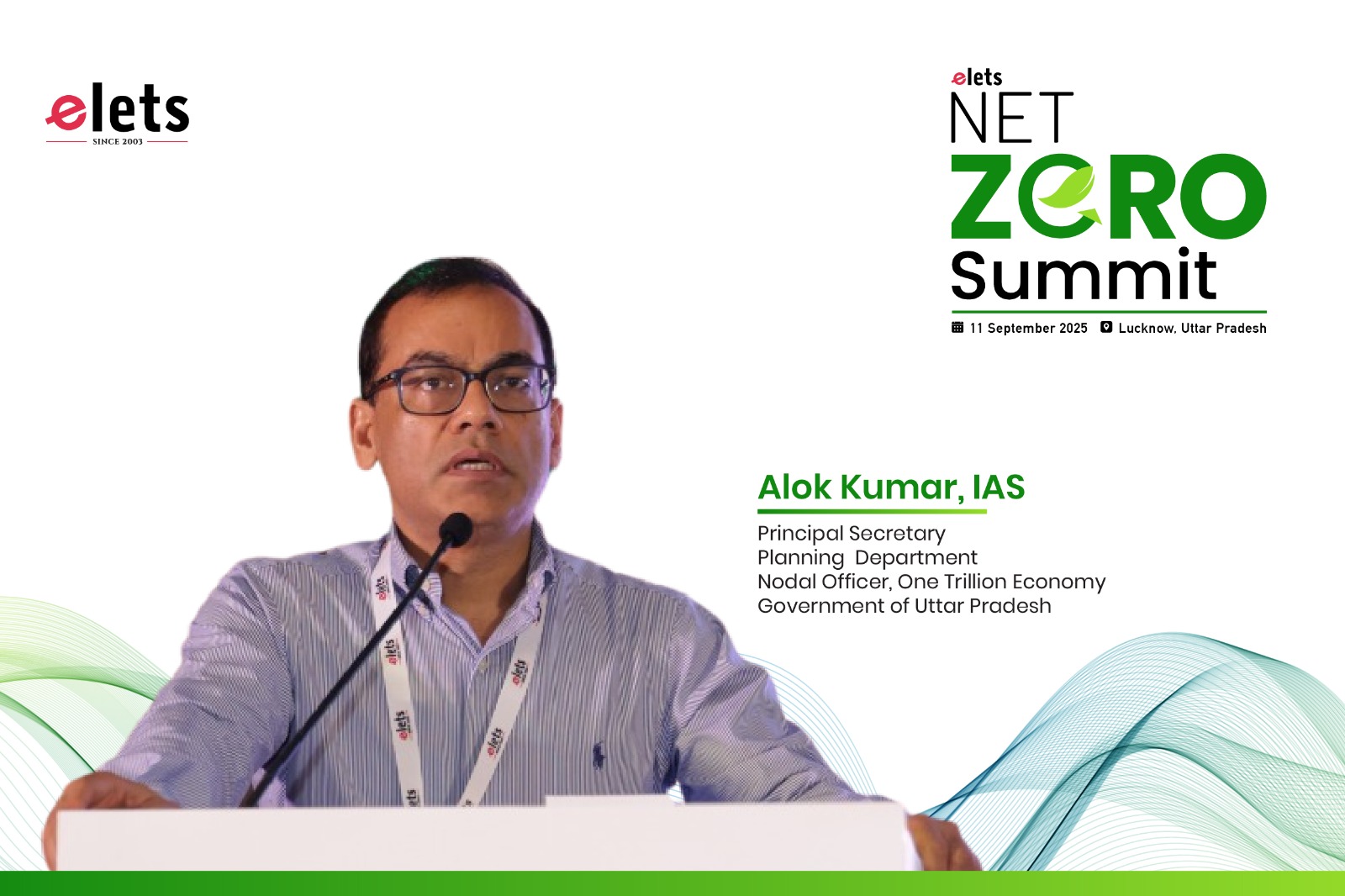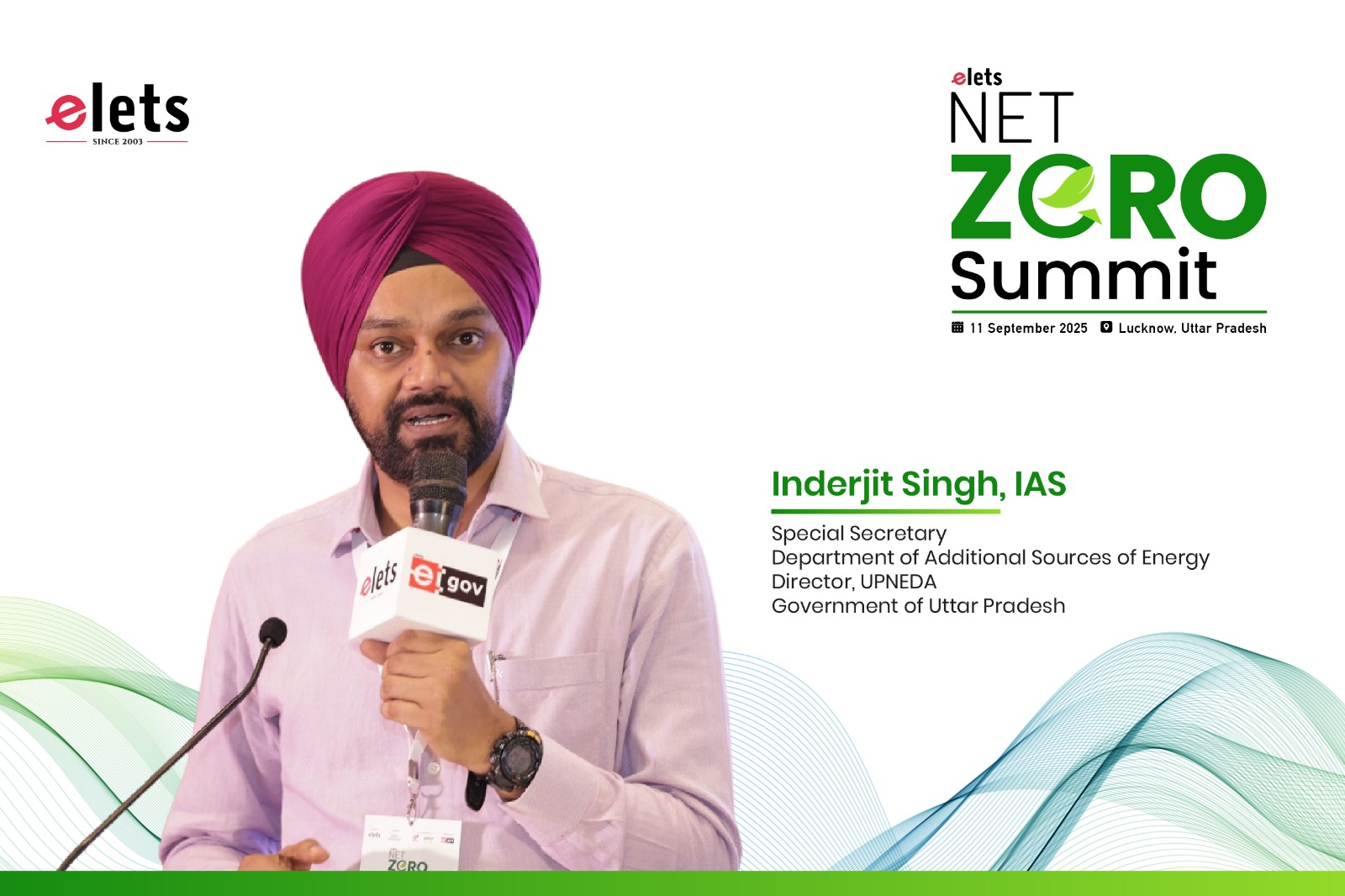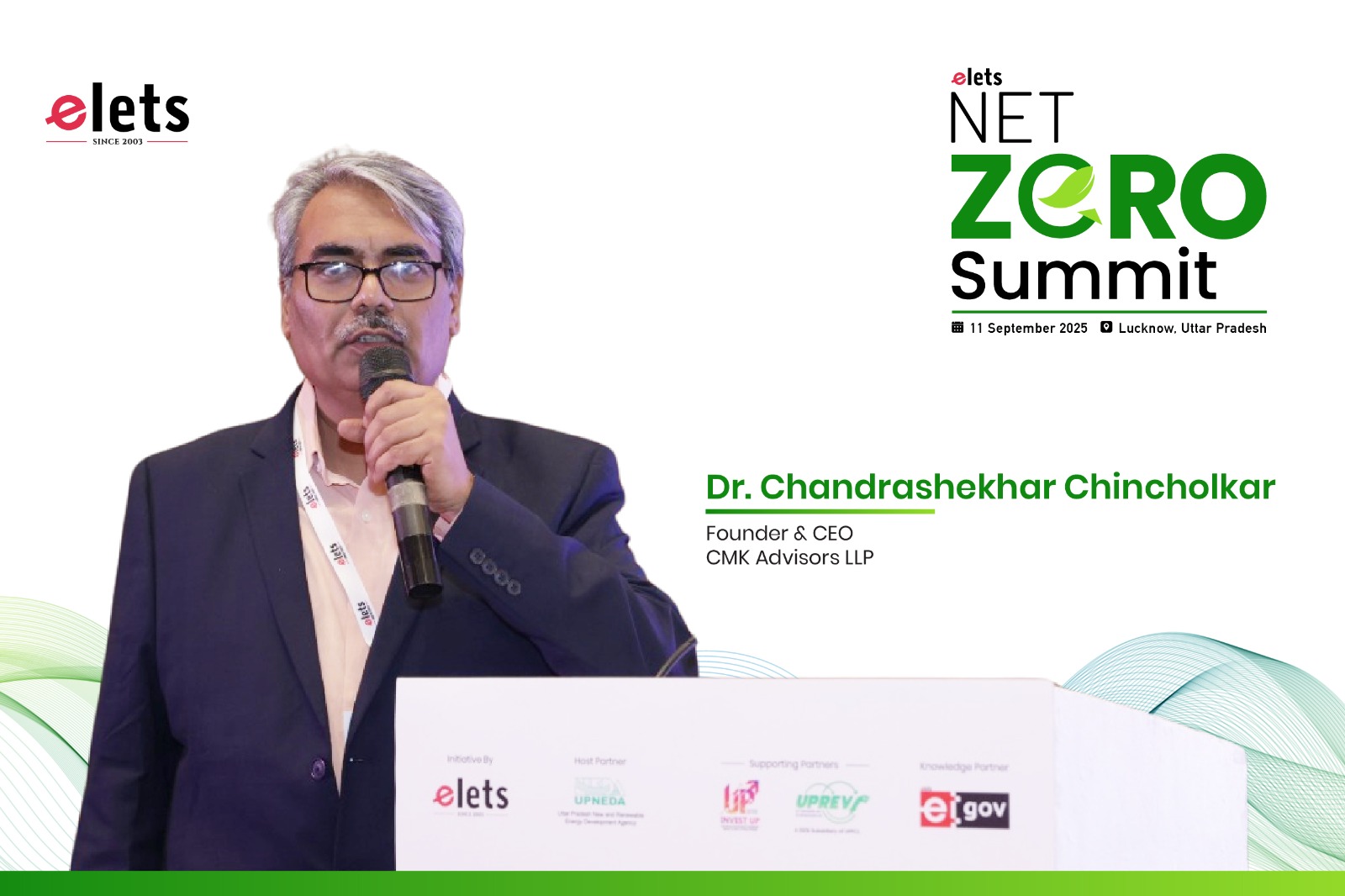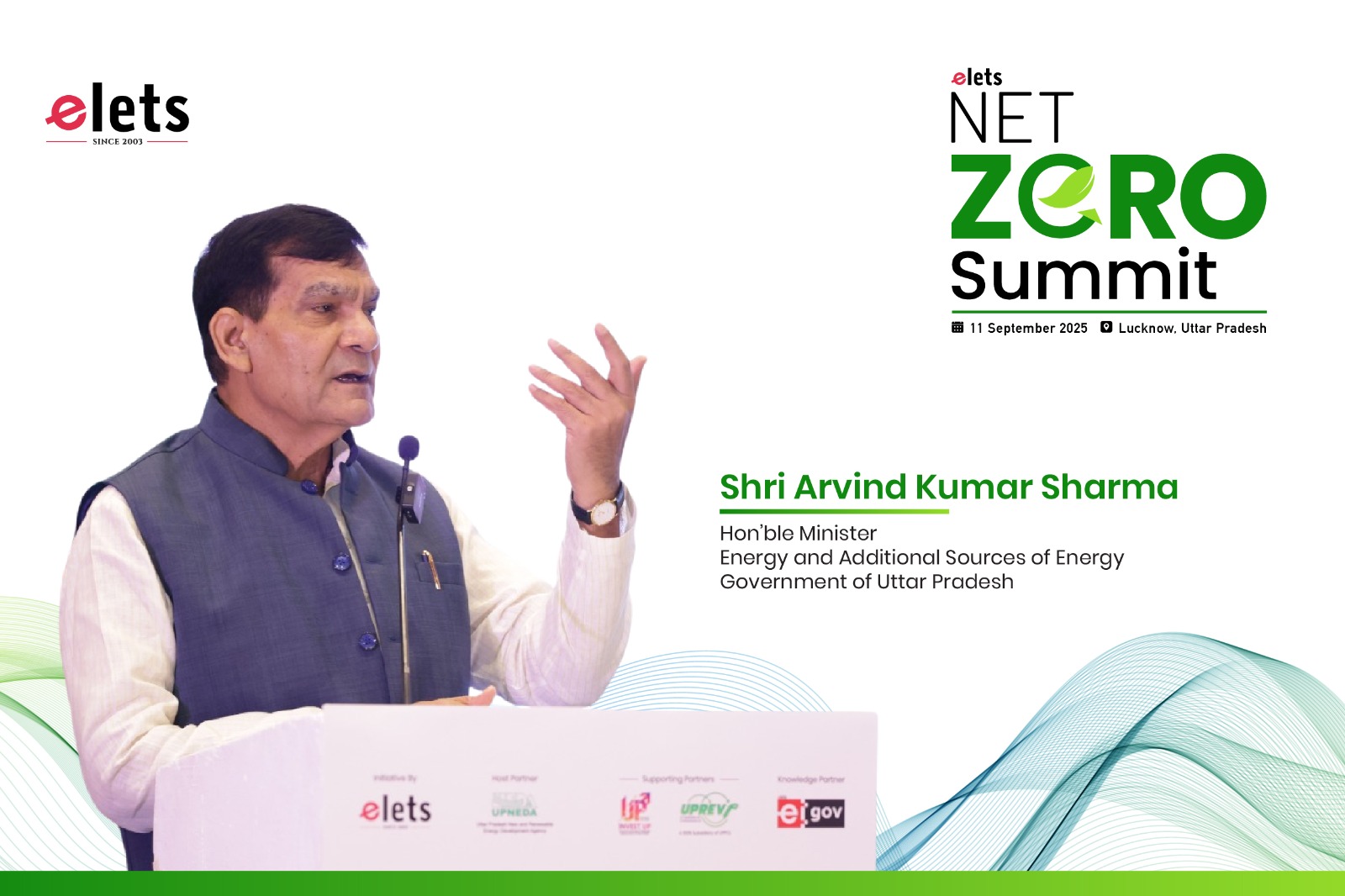
India is making bold strides toward becoming a global leader in renewable energy, aiming to produce 5 million tonnes of green hydrogen annually by 2030 under its National Hydrogen Energy Mission. Achieving this ambitious goal requires cost reductions, infrastructure expansion, and policy reforms. Strategic investments, global partnerships, and advanced technology adoption will be key to accelerating India’s clean energy transition, shares Dr. P.K.C. Bose, Chairman – Cambi India & Executive Advisor to Management Board, Camby Group Norway in an exclusive interview with Abhineet Kumar & Muskan Jaiswal of Elets News Network (ENN).
India aims to produce approximately 5 million tonnes of green hydrogen annually by 2030 as part of its National Hydrogen Energy Mission. What strategies do you envision to overcome the challenges in scaling up green hydrogen production to meet this target?
India aims to produce 5 million tonnes of green hydrogen annually by 2030 under its National Hydrogen Energy Mission. Achieving this ambitious target requires a multipronged strategy to address cost challenges, infrastructure gaps, and policy uncertainties.
1. Reducing green hydrogen production costs
Challenges: Green hydrogen remains 2-3 times more expensive than grey hydrogen due to high electrolyzer and renewable energy costs.
Solutions:
- Boost Electrolyzer Manufacturing: Scale up domestic electrolyzer production through Production-Linked Incentives (PLI) to reduce reliance on imports.
- Lower Renewable Energy Tariffs: Develop large-scale solar-wind hybrid projects exclusively for hydrogen production to cut electricity costs.
- Leverage Carbon Credits & Subsidies: Implement tax incentives, subsidies, and carbon credits to improve cost competitiveness.
2. Strengthening hydrogen infrastructure & storage
Challenges: Limited hydrogen pipelines, storage facilities, and high transportation costs due to liquefaction and compression challenges.
Solutions:
- Develop Hydrogen Corridors: Establish dedicated hydrogen hubs in industrial zones with storage and refuelling stations.
- Invest in Low-Cost Storage: Promote ammonia-based hydrogen transport and Liquid Organic Hydrogen Carriers (LOHCs) for cost-effective storage.
- Build Hydrogen-Ready Pipelines: Retrofit existing natural gas pipelines to accommodate hydrogen blending.
3. Policy & financial interventions
Challenges: Regulatory uncertainties and high capital investment risks hinder large-scale private sector participation.
Solutions:
- Hydrogen Investment Tax Credits: Offer interest-free loans, green bonds, and viability gap funding to encourage investments.
- Establish a Hydrogen Exchange Market: Create an Indian Hydrogen Trading Platform for transparent price discovery.
- Fast-Track Policy Implementation: Accelerate project approvals and clearances under the National Green Hydrogen Mission.
These steps, along with continuous R&D and international collaborations, will be crucial in positioning India as a global leader in green hydrogen production.
Recent reports indicate that India’s renewable energy sector requires $68 billion annually to meet its 2030 goals, yet only $13 billion was invested last year. What measures can be implemented to bridge this investment gap and attract both domestic and international investors?
1. Strengthening Policy & Regulatory Framework
- Streamlined Approvals & Land Reforms: Implement single-window clearances for solar, wind, and hydrogen projects to fast-track approvals and land acquisition.
- Enforce Renewable Purchase Obligations (RPOs): Mandate industries and DISCOMs to procure a minimum share of renewable energy, ensuring demand consistency
- Stable, Long-Term RE Policies: Maintain tariff stability, secure PPAs, and policy continuity to enhance investor confidence.
2. Expanding Public-Private Partnerships (PPP) & Foreign Direct Investment (FDI)
- Liberalized FDI in Renewable Energy: Ensure 100% FDI via the automatic route with investor-friendly repatriation policies.
- Attract Global RE Giants: Engage sovereign wealth funds, pension funds, and climate-focused investors to scale up investments.
- Create Renewable Energy InvITs: Establish Infrastructure Investment Trusts (InvITs) to pool funds for solar, wind, and hydrogen infrastructure projects.
3. Developing Green Energy Trading & Carbon Markets
- India Green Hydrogen & Carbon Exchange: Create a trading marketplace for green hydrogen and carbon
credits, attracting institutional investors. - Introduce Green Tariffs for Corporates: Allow industries to procure renewable power at premium rates to meet their sustainability goals.
- Encourage Corporate RE PPAs: Expand direct renewable energy procurement through open access and wheeling mechanisms to attract commercial and industrial (C&I) users.
The Union Budget 2025-26 is seen as pivotal for advancing India’s sustainable energy future. What policy measures would you recommend to enhance energy storage, offshore wind development, and green hydrogen adoption in India?
The Union Budget 2025-26 presents a crucial opportunity to accelerate India’s sustainable energy transition. To enhance energy storage, offshore wind development, and green hydrogen adoption, targeted policy interventions are necessary.
1. Energy storage: strengthening india’s grid & battery infrastructure
Challenges: High capital costs, lack of a national framework, and limited incentives for large-scale storage.
Recommendations:
- Expand Production-Linked Incentives (PLI) to include grid-scale battery storage & flow batteries.
- Mandate Energy Storage Obligation (ESO) for DISCOMs & industries to procure 5-10% of power from stored
renewable energy. - Reduce GST & import duties on battery materials like lithium, nickel, and rare earth elements.
- Introduce Viability Gap Funding (VGF) for pumped hydro & large battery storage parks.
- Support AI-driven energy forecasting & smart grid integration to optimize storage deployment.
2. Offshore wind development: unlocking coastal potential
Challenges: High upfront investment, inadequate transmission infrastructure, and limited financing options.
Recommendations:
- Provide 30-40% capital subsidies for the first 3-5 GW of offshore wind projects.
- Launch a dedicated Offshore Wind PLI Scheme to boost domestic turbine manufacturing.
- Develop Offshore Wind Port Infrastructure in Gujarat & Tamil Nadu for assembly & maintenance.
- Ensure long-term PPAs & tariff guarantees to de-risk private investments.
- Strengthen global partnerships with Denmark, the UK, and Germany for expertise & financing.
3. Green hydrogen: accelerating india’s hydrogen economy
Challenges: High production costs, limited demand, and inadequate infrastructure.
Recommendations:
- Mandate Green Hydrogen Purchase Obligations (GHPOs) requiring 30% GH₂ usage in refineries, fertilizers, and steel industries by 2030.
- Establish a 20,000 crore Hydrogen Infrastructure Fund for pipelines, storage, & refuelling stations.
- Grant 100% tax exemption for 5 years on domestic electrolyzer manufacturing.
- Create Hydrogen Export Promotion Zones in Gujarat, Andhra Pradesh, & Odisha with custom duty waivers.
- Introduce GH₂ Green Bonds & Carbon Credit Trading for low-interest financing & carbon offset mechanisms.
Also Read :- CSPGCL transforming Chhattisgarh’s power sectory
With the U.S. scaling back on climate commitments, there are calls for nations like China to assume greater leadership in global climate initiatives. How can India position itself as a leader in renewable energy and climate action on the global stage?
With the U.S. scaling back its climate commitments, nations like China are being urged to take greater responsibility. However, India has a unique opportunity to emerge as a global leader in renewable energy and climate action by rapidly scaling renewables, driving clean energy trade, and shaping international climate policies.
1. Advancing climate resilience & sustainable development
India can lead by developing climate-resilient infrastructure, promoting sustainable agriculture, and strengthening climate adaptation efforts:
- Net-Zero Cities & Smart Urban Planning – Expand green buildings, electric mobility, and climate-resilient urban planning.
- Sustainable Agriculture & Water Management – Promote solar-powered irrigation, agroforestry, and efficient water conservation programs.
- Climate Adaptation & Disaster Response – Strengthen early warning systems and implement climate-resilient rural projects.
- Global ESG & Sustainability Leadership – Mandate ESG reporting and enforce corporate sustainability commitments.
2. Attracting green investments & financing
Mobilizing capital is crucial to accelerating India’s clean energy transition:
- $100B India Green Investment Fund – Attract FDI, sovereign wealth funds, and green bonds for renewable projects.
- Green Energy SEZs & Export Hubs – Develop renewable energy special economic zones to attract global investors.
- Carbon Credit & Green Hydrogen Trading – Establish a national carbon market and a green hydrogen trading platform.
- Liberalized Foreign Investment in RE – Offer tax incentives, subsidies, and streamlined land acquisition processes for clean energy projects.
3. Leading international climate diplomacy
India must strengthen its role in global climate negotiations and renewable energy cooperation:
- Stronger Role in G20 & COP Negotiations – Advocate for climate finance, technology transfer, and carbon pricing mechanisms.
- Expanding the International Solar Alliance (ISA) – Transform ISA into a global investment and policy hub for renewable energy.
- India-EU & India-GCC Green Partnerships – Deepen collaborations in renewable energy trade and supply chains.
- Championing Global South’s Climate Needs – Push for climate justice, adaptation financing, and debt relief for vulnerable nations.
By implementing these strategies, India can position itself as a green energy powerhouse and a leader in global climate action, setting an example for sustainable development worldwide.
Would you like a detailed roadmap for India’s green hydrogen or solar diplomacy strategy?
India has the potential to become a global hub for green hydrogen (GH₂) and solar energy through strategic policy, international collaboration, and infrastructure development.
1. Strengthening domestic green energy foundations
India aims to produce 5 million tonnes of GH₂ by 2030 by scaling up electrolyzer manufacturing and expanding storage and distribution networks. The country is also targeting 280 GW of solar capacity, with a focus on rooftop, floating, and hybrid RE parks, alongside grid modernization and battery storage.
2. Enhancing global collaborations
India is forming GH₂ partnerships with the EU, Japan, South Korea, Australia, UAE, and Saudi Arabia to establish supply agreements and global pricing mechanisms. The International Solar Alliance (ISA) is being positioned as a global solar financing and technology platform, aiming to mobilize $1 trillion by 2030.
3. Securing investments & financing
India seeks to attract $100 billion in private and foreign investments via Sovereign Green Bonds, carbon trading markets, and tax incentives. A robust carbon credit system will further position India as a low-carbon economy and GH₂ exporter.
4. Advancing technology & supply chains
To reduce dependence on China, India is incentivising domestic solar panels, electrolyzers, and battery manufacturing while securing critical minerals from Australia, Chile, and Africa. Green energy export hubs in Gujarat, Rajasthan, Tamil Nadu, and Andhra Pradesh will establish India as a leading GH₂ and solar exporter.
Be a part of Elets Collaborative Initiatives. Join Us for Upcoming Events and explore business opportunities. Like us on Facebook , connect with us on LinkedIn and follow us on Twitter, Instagram.
"Exciting news! Elets technomedia is now on WhatsApp Channels Subscribe today by clicking the link and stay updated with the latest insights!" Click here!




